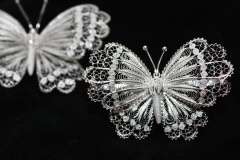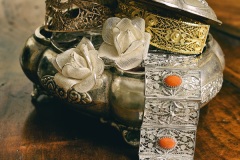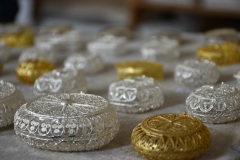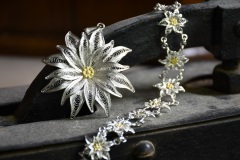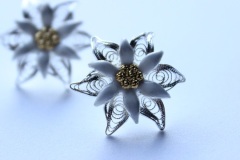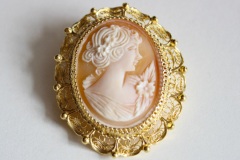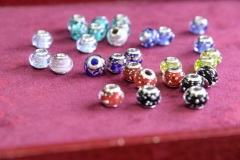History of filigree
The art of filigree is very ancient: it dates back to the dawn of Middle Eastern civilization. The first ancient objects with filigree decorations date back to 2500 BC. The goldsmith technique later acquired great maturity first with the Minoan civilization, then in mainland Greece: with the first Greek colonies the art of filigree arrived in the West. The testimony of the emergence of the filigree in Italy dates back to the early Crusades.
In the first half of the 1600s the production increased and in the 1700s the filigree was used to embellish sacred furnishings, ornaments and as an ornament of popular costumes; from 1800 until the first decades of 1900 the great expansion of filigree objects took place, which conquered every social class. The most important centers of filigree become Genoa, Turin, Vercelli, Cortina d’Ampezzo, Scanno, Pesco Costanzo, Agrigento and Sardinia. In 1882, more than 450,000 kilos of silver and more than 100,000 kilos of filigree gold were exported from Italy to Europe and America.
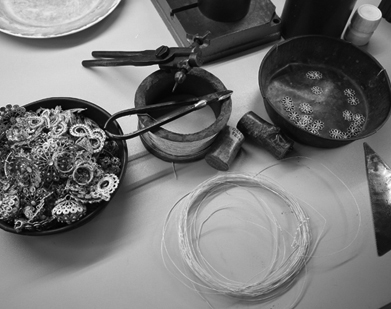
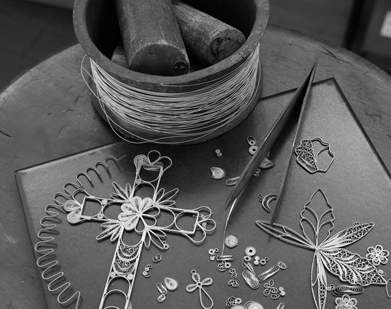
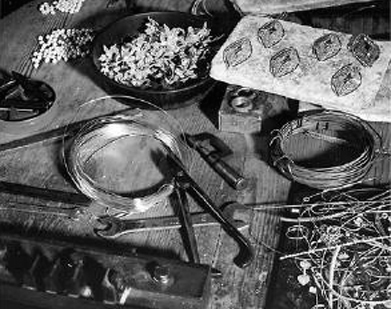
In this particularly prosperous historical context, in 1884 the Campese artisan Antonio Oliveri, trained in the Genoese laboratory of the filigree Antonio Grasso, decided to open his own business in Campo Ligure. Tradition has it that this happens due to a cholera epidemic that is raging in Genoa but it is more credible that it is a choice linked to the lower cost of labor. His example is followed by other artisans: it is the beginning of a tradition that will soon see the birth of about thirty workshops and will make Campo Ligure an authentic capital, so much so that it is defined as the National Center of filigree jewelery.
Even today in his workshop, the filigree with the “bruscelle” (pliers of various sizes) and a torch to weld the silver threads creates rich embroideries that go to create precious objects. The meticulous and patient workmanship that is hidden in each of them makes them small works of art.
Working process
The processing of the watermark follows several stages:
Fusion
It is the operation that allows the transformation of pure silver (999 ‰) into rods intended for processing.
Drawing
Twisting
Lamination
Scaffolding
Filling
Welding - Finishing
Our jewels
Filigree jewelry
The processing of filigree jewels follows the phases and rules of this ancient tradition. Thanks to the use of different machinery, pure silver is melted and transformed into very thin threads, which are then entrusted to highly skilled craftsmen who, with their own hands, create small works of art. Each single piece is made entirely within the company and therefore customers are offered the opportunity to customize each product, according to their tastes and needs. Within this production, particular emphasis is given to the jewels of the Sardinian, Abruzzese and South Tyrolean traditions.
Jewels of the Sardinian tradition
Filigree is an art that has a fortunate tradition in Sardinia, an island that has collected techniques from other Mediterranean countries to create its own, which still teaches today. It is a process that requires patience and skill as it is miniature and has given rise to small works of art such as precious jewelry, wedding rings and ornamental brooches decorated with naturalistic and geometric motifs.
Jewels of the Abruzzo tradition
The Abruzzo goldsmith has suffered foreign influence. The Lombards created the first goldsmith shops in Abruzzo. The embroideries take up floral and magical-symbolic textures of the apotropaic tradition. The typical objects of the Abruzzo tradition are choker necklaces with filigree or embossed spheres and star-shaped medallions with filigree arabesques.
Traditional South Tyrolean jewels
The South Tyrolean goldsmith production finds its fulcrum in Cortina d’Ampezzo. Jewelery in silver threads representing the flowers of the Alps are emblems of this tradition, which dates back to the 18th century. Tourism, which already affected the mountain resort in the nineteenth century, has increased the demand for souvenir items, so much so that a special school was opened.
Sale exclusively to resellers
If you want to become a reseller of our products fill out the form and indicate your company information.
Contact us